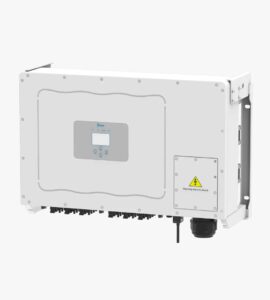Tony Van Herbruggen | General Manager- Power Technique | Atlas Copco
Construction equipment is mainly used in the construction of residential and non-residential buildings, such as tunnels, roads, and others. Whereas mining equipment is used in underground mining, drilling, and mineral processing, and surface mining. The involvement of manpower has been reduced and explosions have been eliminated due to the presence of mining equipment. Innovation in the Construction and mining equipment industry led to the completion of the project in stipulated time.
Due to increased activities in the mining and construction sector resulted in the increased demand for technically advanced solutions from developing countries fueled the growth of the world construction and mining equipment market.
2020 and now 2021 has been an exceptional year and the pandemic has impacted projects worldwide. In the coming years, we should look forward to infrastructure and mining projects getting kick-started giving us continued opportunities to touch lives and improve the infrastructure needs of people in India. The equipment industry is expected to see slow and staggering growth in the short term but stability and better can be seen growing in the long term.
Challenges
Along with other sectors, the construction sector also witnessed the impact due to the onset of the second wave of the COVID 19 pandemic. However, it is imperative to note that the construction sector in India plays a significant role as it contributes to around 60% of the total investments; so, it needs to come back strongly to support the economic revival.
India is witnessing continuous economic growth. Today, the construction and infrastructure segment requires speed and focus in all areas of core infrastructure such as metro, rail, roads, expressway, airports, and expansion on existing highways.
While demand has slowed down, we can expect a better recovery in the coming months as, during the second wave, construction activity in some sectors was permitted to continue.
The main challenge faced by the manufacturers is to bring new technology on a constant basis. Market leaders are planning to come up with advanced technology products to grow faster than the industry for that they are continuously innovating.
Some of the major challenges are losses on account of idling equipment, lack of special incentives or schemes to finance the import of hi-tech construction equipment for infrastructure projects.
Opportunities
The construction equipment industry in India has the biggest prospective for expansion and opportunities for growth and investment. The major factors that currently drive the demand for construction equipment in India mainly include infrastructural projects by public and private enterprise like building construction, tunnels, maintenance, road construction, power plants, ports, urban infrastructural developments etc. It has also seen incremental growth with the smart cities has been started in India.
The construction and mining equipment industry of India is going to change in the industry due to increased modernization in the infrastructure, mining, and construction in India.
This also indicates a robust growth of the Indian equipment sector in the coming years. To emphasize indigenization, the industry can fulfil domestic requirements with tailored and cost-effective options. It will be a great support for the suppliers to improve margins and costs. Better awareness of the benefits of using qualified manpower, training programs and dedicated grants, scholarships for manpower training can be considered as a boon for the industry. The concept of used- equipment exchange and buyback plans can help strengthen the sales of the used machinery market.
The tight collaboration among the industry, government, and policymakers to ensure that the challenges of the sector can be overcome thereby paving the roadmap of growth and progress of the country can be one of the success factors for the construction ecosystem.
The continued demand for construction and mining equipment such as portable compressors is due to the increased focus on road development and the revival in the mining and quarrying segment, there is continued demand for portable compressors. Along with this the waterwell segment also contributes to the demand of large compressors for borewell applications.
Trends
The other opportunities for the industry could be renting or leasing of equipment and prospective collaborations, joint ventures, & mergers & acquisitions by leading market players.
Urbanization: A well-built infrastructure is a base for the growth of any developing nation to ensure standard quality of life and high gross domestic product (GDP). Due to rapid urbanization and industrialization over the past few decades, there has been excessive pressure on the urban infrastructure in India. Due to the densest road networks in India but lacks in the number of multilane highways, the demand for airport infrastructure, railways, roads, urban and rural housing, office spaces and numerous other residential projects – all indicating the need for improved infrastructure.
Urbanization will increase the demand for building apparatus and tools to meet the growing needs for residential and commercial projects.
To speed up projects and usage in new applications: Construction equipment market tends to grow to speed up the completion of the current residential projects as well as to fulfil the rising demand of equipment for newer segments like mining, commercial projects, housing, agriculture which previously had low access and are slowly adopting standard machinery.
The rising demand for construction equipment signifies the growth of the construction equipment industry in India.
Despite facing various challenges, the construction and equipment market is going to see huge growth in demand. Foreseeing large construction and infrastructure projects underway the construction equipment industry will see a boom in the coming days. The increased size of projects and tighter deadlines and faster completion of projects also favor the demand for the automation of work at construction sites.






